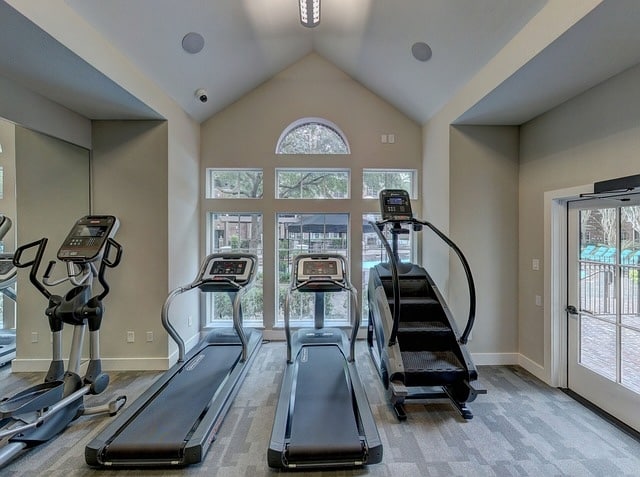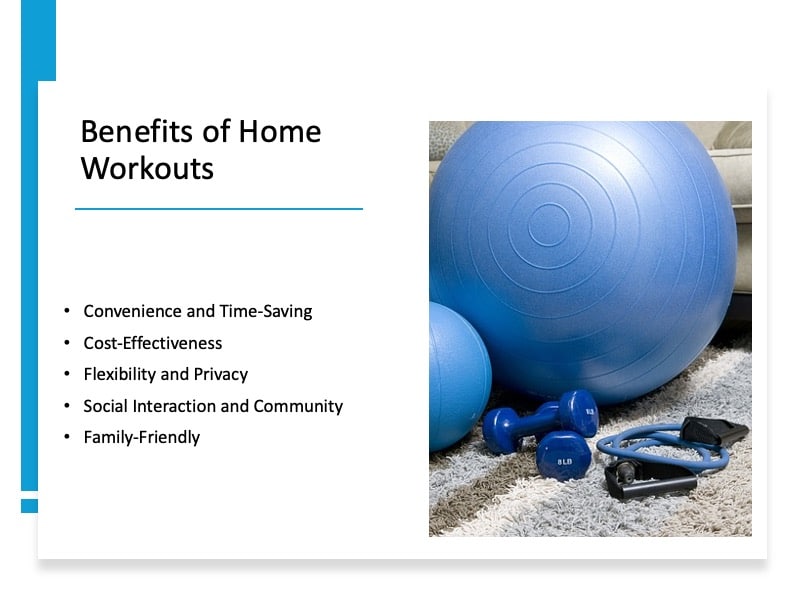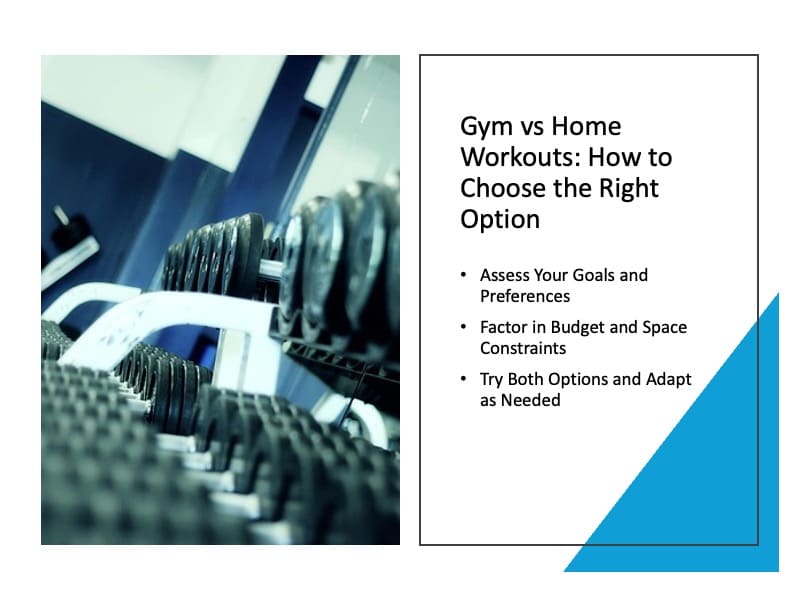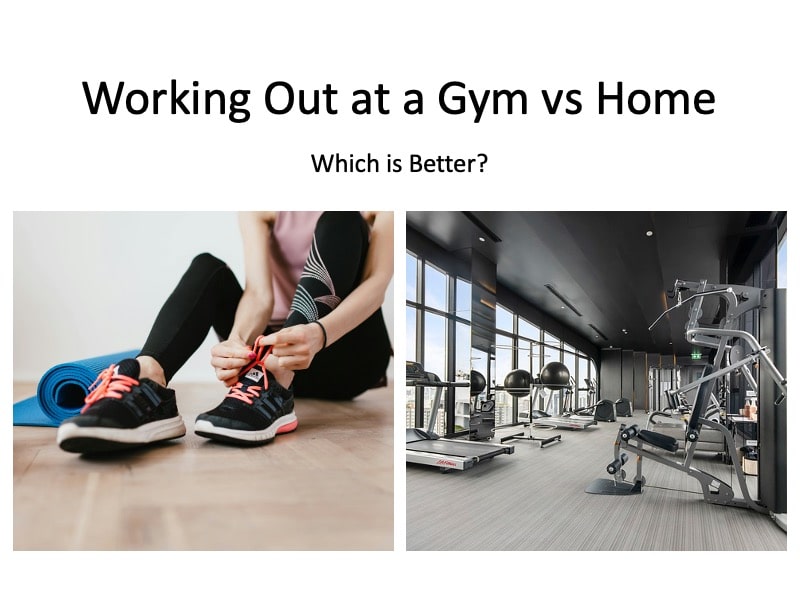Choosing between working out at a gym or creating a home fitness space is a personal decision shaped by lifestyle, goals, and preferences. For some, like myself, COVID-19 shifted my routine away from the gym and led me to invest in a well-equipped home setup.
During the pandemic, I gradually built a home gym, gathering weights, cardio equipment, and more, which allowed me to stay active without leaving the house.
With ample space and the right tools, working out at home became a convenient option, especially for times when my schedule was packed or I needed to maximize recovery between training sessions.
However, I still appreciate the unique benefits that gyms and weight rooms offer, particularly when I’m playing basketball professionally overseas.
In those cases, the energy of a gym or weight room, surrounded by other athletes, provides a motivating and focused environment that can’t be fully replicated at home.
I find that gyms abroad allow me to stay engaged with my sport while training alongside other athletes who push me to improve. Whether it’s access to high-quality equipment or the specialized design of weight rooms, there’s something energizing about the gym experience that’s valuable for performance training.
Ultimately, everyone’s ideal setup varies, with factors like space, budget, and goals influencing the best choice.
Some people thrive on the social atmosphere and range of options in a gym, while others enjoy the privacy and accessibility of a home gym.
Here, we’ll explore the advantages of each setting to help you choose the one that best supports your fitness journey and aligns with your lifestyle.
Working Out at a Gym

Working out at a gym offers access to diverse equipment, expert guidance, and an inspiring community, making it an ideal choice for achieving a wide range of fitness goals.
Choosing the right gym can elevate your workout experience by providing a structured environment that fosters consistency and motivation.
With trainers on hand and the encouragement of fellow members, gyms create accountability and inspiration that’s hard to replicate in a home setting.
Benefits of Gym Workouts

Joining a gym provides access to equipment, professional guidance, and an atmosphere designed to motivate and inspire. Here’s why many people find the gym setting ideal for their fitness journey.
Access to a Variety of Equipment
Gyms are equipped with a wide range of machines and free weights, offering variety that’s difficult to replicate at home.
From high-tech cardio machines to specialized strength-training equipment, the range of options allows for comprehensive, well-rounded workouts.
Access to professional-grade equipment is especially beneficial for those focused on strength training, as purchasing similar equipment for a home gym can be prohibitively expensive.
Motivation and Accountability
The energy in a gym can provide motivation and drive, surrounded by others pushing themselves toward their fitness goals.
Having people around creates a sense of accountability and can help combat the temptation to cut a workout short or skip it altogether.
Seeing others working hard often serves as a reminder of personal goals and helps maintain consistency.
Classes and Trainer Access
Many gyms offer group classes and personal training sessions, which can be great for those looking to learn new exercises or prefer the structure of guided workouts.
Classes add variety and can break up the monotony of solo workouts, while trainers offer personalized guidance, improve technique, and help set attainable goals.
Whether it’s yoga, HIIT, or strength conditioning, gyms often have something for every interest and fitness level.
Social Interaction and Community
For people who thrive in social environments, the gym provides a community of like-minded individuals. Working out with friends or meeting people with similar goals can make fitness feel less like a chore and more like a shared experience.
The community aspect can also create accountability, encouraging you to attend regularly and push yourself.
Drawbacks
While gyms have plenty of benefits, they aren’t always the best fit for everyone. Here are some common drawbacks.
Cost of Membership
Gym memberships can be expensive, especially if you opt for facilities with extensive amenities or classes.
Many gyms also require long-term commitments or have cancellation fees, which can be limiting if your schedule or budget changes.
For those on a tight budget, the cost of a gym membership may outweigh its benefits.
Commute and Time Constraints
The time it takes to get to and from the gym can be a barrier, especially for those with busy schedules. Driving to a gym during peak hours or dealing with parking issues can reduce the convenience of a workout and may impact consistency.
Crowds and Waiting for Equipment
Gyms can be crowded, especially during peak hours, making it difficult to access equipment.
Waiting for machines or free weights can be frustrating and disruptive to workout flow.
This issue is especially prevalent in popular urban gyms, where demand is high and space can be limited.
Working Out at Home

Working out at home offers unmatched convenience, flexibility, and privacy, allowing you to exercise on your own schedule and in a familiar space.
With minimal equipment and no commute, home workouts make it easier to stay consistent and integrate fitness into a busy lifestyle.
For those who prefer a tailored, low-cost routine, working out at home provides a comfortable and accessible way to reach fitness goals.
Benefits of Home Workouts

Home workouts have become increasingly popular due to their flexibility and convenience.
For many, exercising at home offers a personalized, time-efficient way to stay fit. Here are the main benefits of working out at home.
Convenience and Time-Saving
One of the biggest advantages of a home gym is that you can work out anytime without needing to travel.
This level of convenience eliminates commuting time, making it easier to fit workouts into a busy day.
You have control over your workout environment, and the ease of access can encourage consistency and help build a sustainable routine.
Cost-Effectiveness
After an initial investment in basic equipment, working out at home is often more affordable than a gym membership.
You can start with budget-friendly essentials like resistance bands, dumbbells, or yoga mats, then gradually expand your setup.
With no monthly fees or added costs, home workouts are ideal for those looking to save money while maintaining a fitness routine.
Flexibility and Privacy
At home, you have complete control over your workout routine, which means you can try different exercises or mix up your workouts without feeling self-conscious.
You can listen to your own music, dress comfortably, and set your own pace.
For beginners or those who feel intimidated in a gym setting, home workouts provide a private, pressure-free environment to build confidence and consistency.
Family-Friendly
Home workouts allow parents or those with household responsibilities to exercise without arranging for childcare or leaving home.
This flexibility can make it easier to integrate fitness into a family-oriented lifestyle. Many parents find that home workouts are a practical way to model healthy habits for their children.
Drawbacks
While working out at home has its perks, there are challenges and limitations. Here’s a look at the common drawbacks.
Limited Equipment Options
Setting up a home gym with a wide range of equipment can be costly and requires space. For those interested in diverse workouts or heavy lifting, replicating a gym setup at home is often impractical.
Many types of equipment, like cable machines or squat racks, are large and expensive, which can limit the types of exercises you can do at home.
Potential for Lower Motivation
Without the social environment and accountability a gym provides, staying motivated at home can be challenging.
The distractions of household tasks, entertainment, or family members can make it harder to focus on workouts. It requires self-discipline and a strong commitment to maintain regularity in home workouts.
Lack of Professional Guidance
While online resources and apps can guide home workouts, the absence of a personal trainer or instructor can mean limited feedback on form and technique. For beginners, this can increase the risk of injury or create challenges in progressing effectively.
Without real-time feedback, it may be difficult to know if you’re executing exercises correctly.
Gym vs Home Workouts: How to Choose the Right Option

The decision between working out at a gym or at home depends on your unique fitness goals, budget, lifestyle, and preferences. Here are some points to consider when choosing between the two.
Assess Your Goals and Preferences
If you’re working toward specific strength or endurance goals, the range of equipment at a gym may be beneficial.
Conversely, if you prefer flexibility, enjoy exercising alone, or have a busy schedule, home workouts may be more convenient.
Consider whether you’re more motivated by a social environment or by the convenience of a home setup.
Factor in Budget and Space Constraints
Home workouts are typically more affordable in the long run, but they require an upfront investment for equipment. Evaluate your budget and the available space to set up a home gym.
If your budget allows, you might also consider a hybrid approach where you invest in essential equipment for home but supplement with occasional gym visits.
Try Both Options and Adapt as Needed
Sometimes, the best way to make a decision is by trying both options. Many gyms offer trial memberships, allowing you to experience the environment and determine if it’s motivating.
Likewise, starting with home workouts can help you assess if the convenience outweighs the benefits of a gym setting.
Flexibility is key—some people find that combining both approaches provides the best of both worlds.
Final Thoughts: Working Out at Home vs the Gym – Which is Better?
Both gym and home workouts offer unique benefits, and the better option depends on what aligns with your lifestyle, goals, and preferences.
Gyms provide a community atmosphere, access to a variety of equipment, and opportunities for professional guidance, making them ideal for those who enjoy structured environments and thrive on motivation from others.
On the other hand, home workouts offer unmatched convenience, affordability, and flexibility, making them suitable for individuals who prefer privacy and a tailored workout environment.
Whichever path you choose, consistency and commitment are what ultimately drive results.
Take time to assess your goals, experiment with both options, and find the setting that keeps you motivated and progressing on your fitness journey.


Leave a Reply